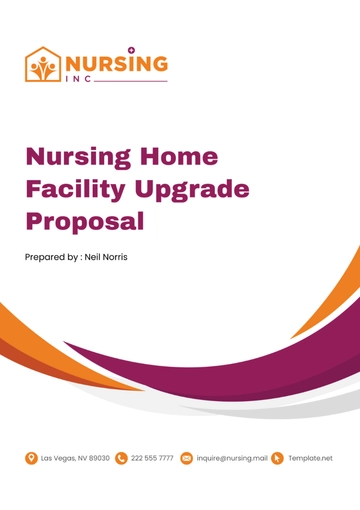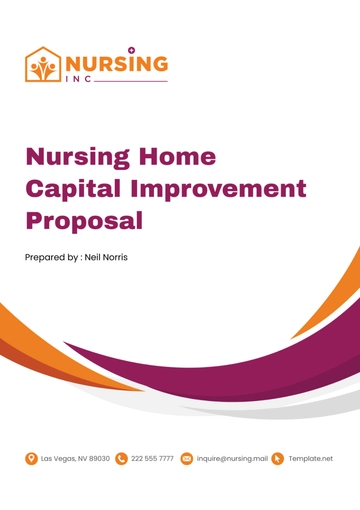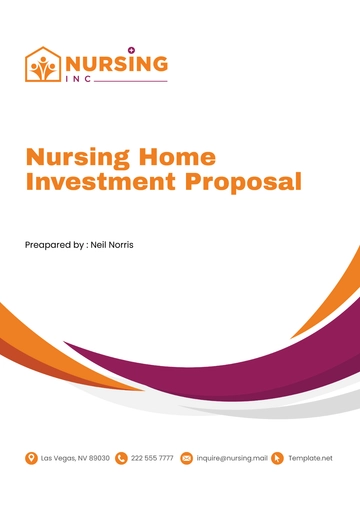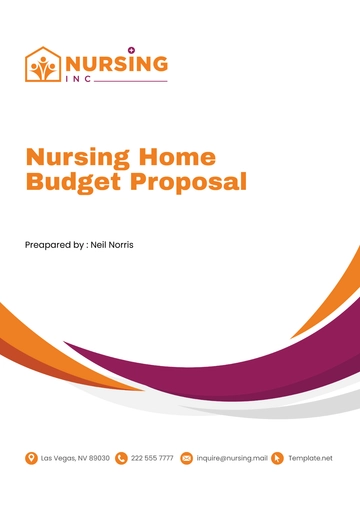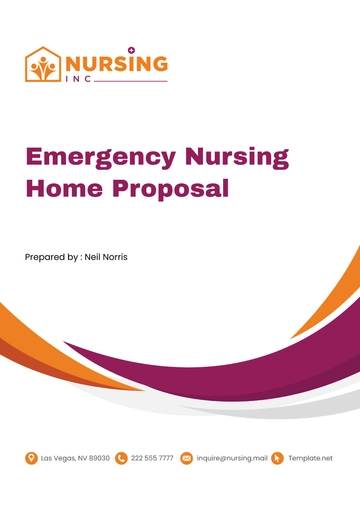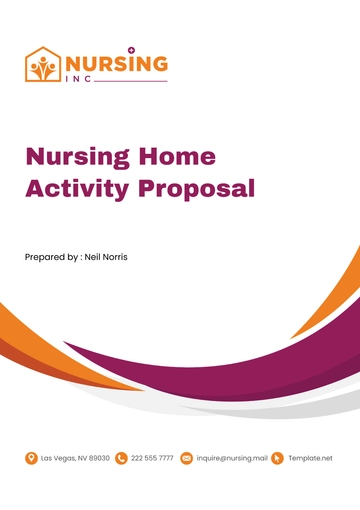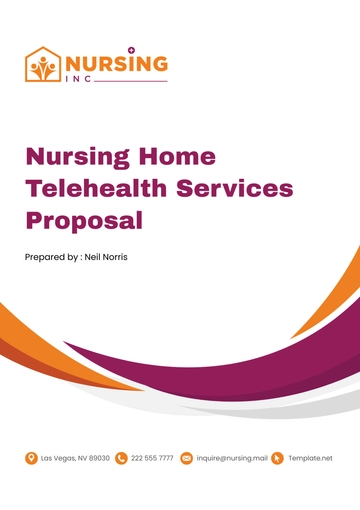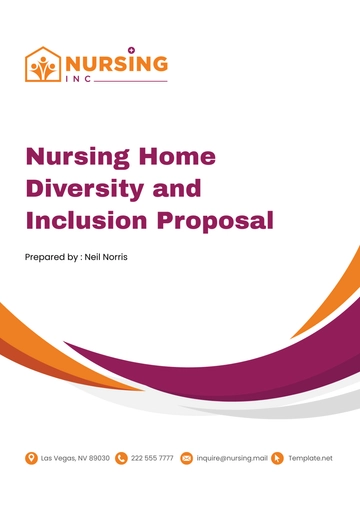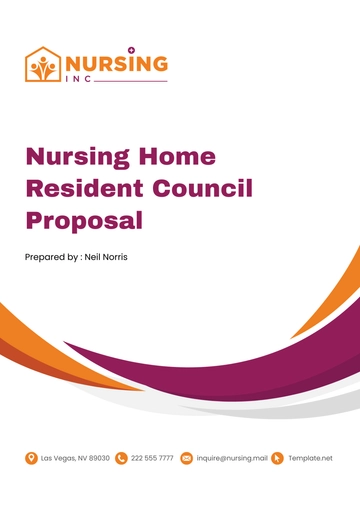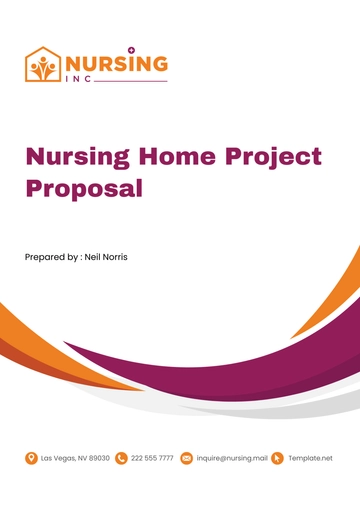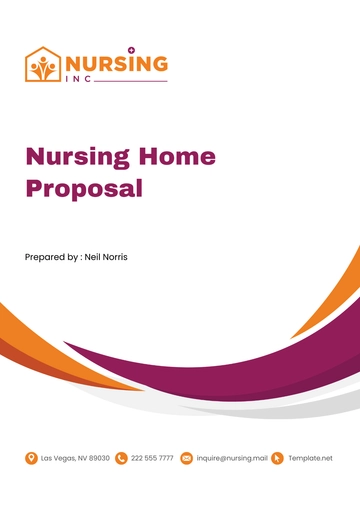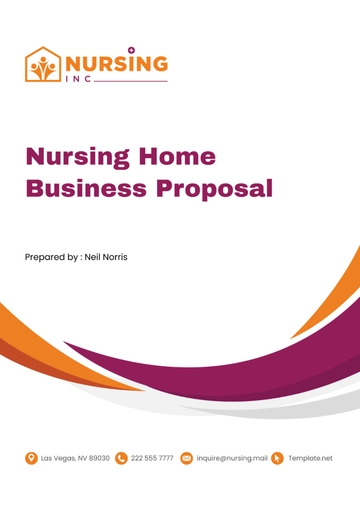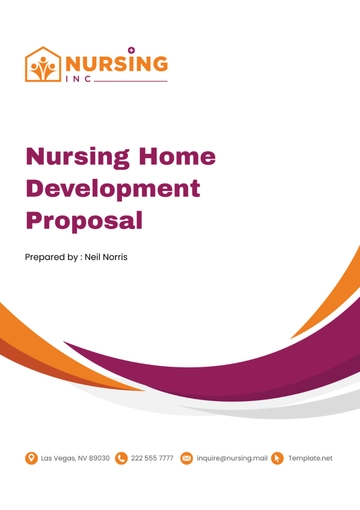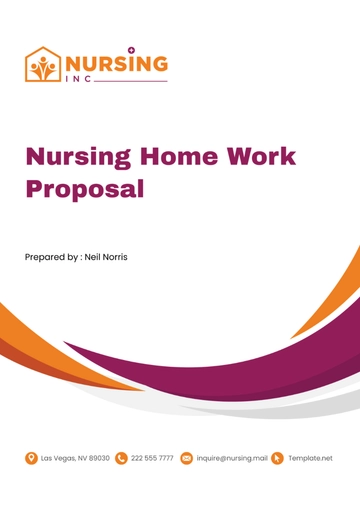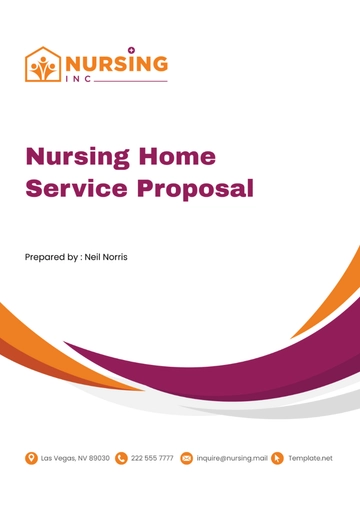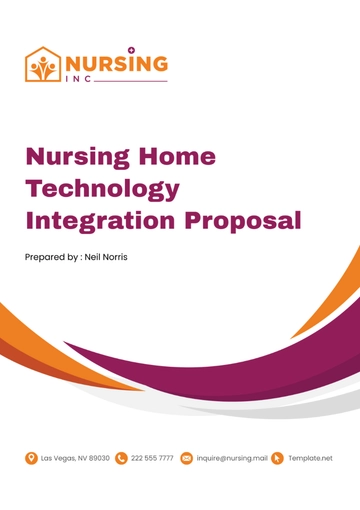Free Nursing Home Telehealth Services Proposal
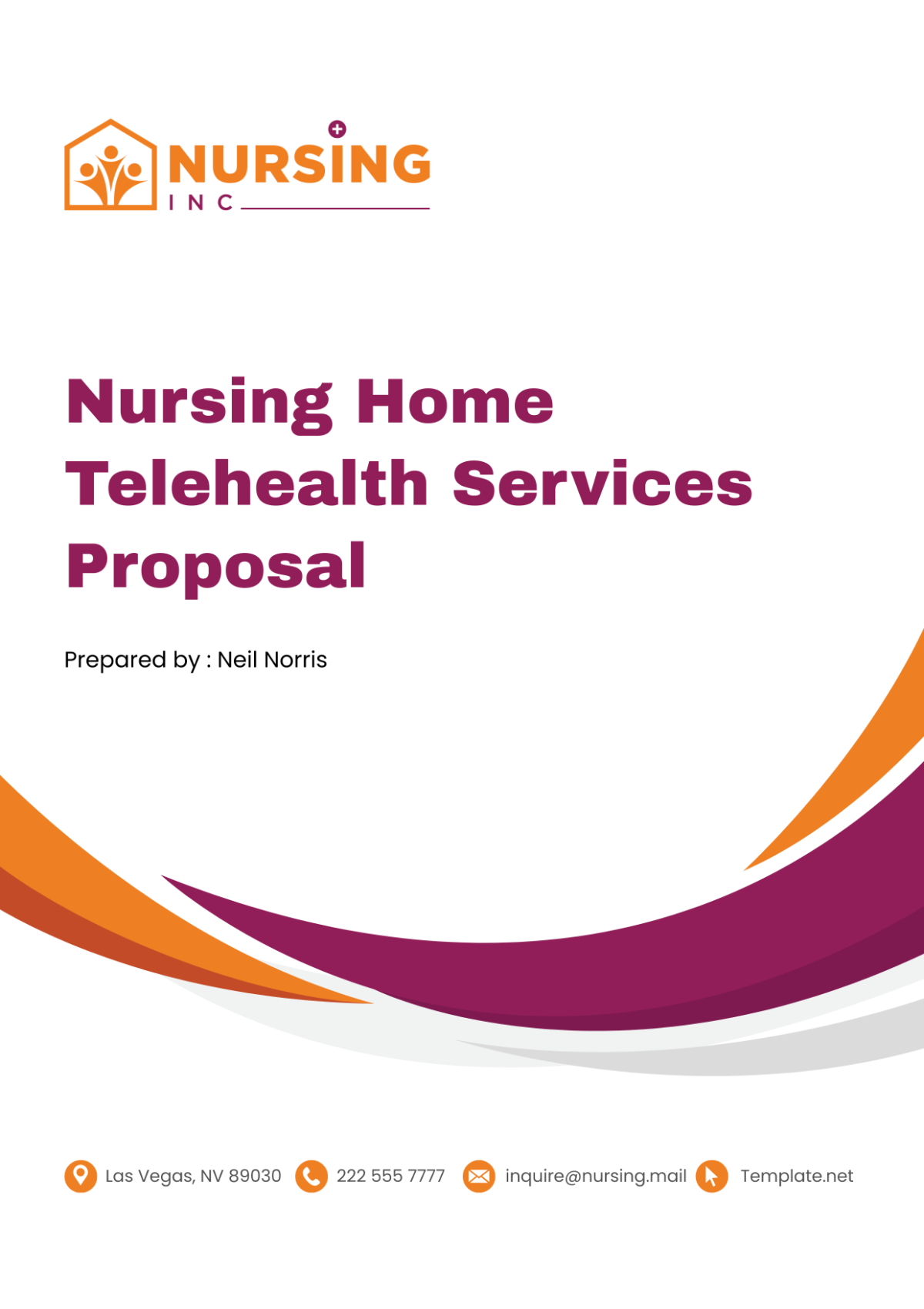
1. Executive Summary
Introduction
[Your Company Name] proposes to introduce a state-of-the-art Telehealth Service Program aimed at revolutionizing healthcare delivery in nursing homes. This proposal outlines our plan to implement a comprehensive telehealth solution designed to provide high-quality medical care to residents, leveraging the latest in digital health technologies.
Objective
Our primary goal is to enhance the accessibility, efficiency, and quality of healthcare services for nursing home residents. By integrating telehealth into our care delivery model, we aim to ensure that residents receive timely medical attention, reduce the need for physical transportation to healthcare facilities, and ultimately improve their overall health outcomes.
Key Benefits
Enhanced Access to Care: Telehealth services will provide residents with immediate access to a wide range of specialists and healthcare providers, irrespective of their geographic location.
Improved Health Monitoring: Continuous remote monitoring of residents’ health will enable proactive management of chronic conditions and prevent potential health crises.
Cost Savings: By reducing the necessity for off-site medical appointments and hospital readmissions, we anticipate significant savings in healthcare costs.
Resident Satisfaction: The convenience and immediacy of telehealth services are expected to improve resident satisfaction and quality of life.
2. Background and Rationale
Current Situation
Currently, the healthcare delivery model in nursing homes relies heavily on in-person visits and routine check-ups by visiting healthcare providers. However, this model faces challenges such as limited access to specialized care, logistical difficulties in transporting residents to off-site medical appointments, and delayed interventions for emerging health issues.
Need for Telehealth
The integration of telehealth services represents a timely and effective solution to these challenges. With the aging population growing and the healthcare industry evolving, telehealth has become increasingly vital. It offers a flexible, efficient, and scalable approach to healthcare, allowing nursing homes to provide a higher standard of care, tailored to the unique needs of their residents.
Expected Outcomes
Implementing telehealth services is expected to lead to:
Reduced wait times for medical consultations.
Early detection and management of health conditions.
Increased efficiency in healthcare delivery.
Enhanced communication between residents, families, and healthcare providers.
3. Proposed Telehealth Services
Types of Services
Service Type | Description |
|---|---|
Virtual Consultations | Real-time video conferencing with healthcare providers for diagnosis, treatment, and follow-ups. |
Remote Monitoring | Use of wearable devices and health monitors to track vital signs and detect abnormalities. |
Emergency Telemedicine | 24/7 access to emergency healthcare professionals for urgent medical concerns. |
Mental Health Support | Virtual sessions with psychologists and therapists to support residents' mental well-being. |
Specialist Access | Specialty care consultations, including cardiology, neurology, and geriatrics, via video call. |
Service Providers
[Your Company Name] has partnered with leading healthcare organizations and specialist networks to deliver high-quality telehealth services. Our partners are equipped with the latest telehealth technologies and are committed to providing compassionate, expert care to our residents.
Technology Requirements
To successfully implement the telehealth services, the following technology infrastructure will be established:
Hardware: Tablets and mobile devices for video consultations, wearable health monitors, and emergency alert systems.
Software: Secure telehealth platforms for scheduling and conducting virtual consultations, health monitoring applications, and data analysis tools for healthcare providers.
Connectivity: High-speed internet connection to ensure reliable access to telehealth services.
4. Implementation Plan
Phases
The implementation of the Telehealth Services Program will be divided into four main phases, ensuring a smooth transition and effective integration into current care practices.
Phase | Details |
|---|---|
Planning and Infrastructure Setup (Months 1-2) |
|
Staff Training and System Testing (Months 3-4) |
|
Pilot Launch and Initial Rollout (Months 5-6) |
|
Full Implementation and Evaluation (Months 7-12) |
|
Timeline
Phase | Duration |
|---|---|
Planning and Infrastructure Setup | Months 1-2 |
Staff Training and System Testing | Months 3-4 |
Pilot Launch and Initial Rollout | Months 5-6 |
Full Implementation and Evaluation | Months 7-12 |
Staff Training
Training sessions will cover:
Basics of telehealth and its benefits.
Operational training on telehealth platforms and devices.
Protocols for scheduling and conducting virtual visits.
Data privacy and security best practices.
How to assist residents in using telehealth technologies.
5. Legal and Ethical Considerations
Compliance
The Telehealth Services Program will adhere to all applicable laws and regulations, including:
Health Insurance Portability and Accountability Act (HIPAA) for protecting patient privacy and data security.
State-specific telehealth regulations governing virtual care delivery.
Consent
A process for obtaining informed consent from residents or their legal guardians will be established, which will include:
Detailed information on the telehealth services being provided.
Explanation of the potential benefits and risks.
Assurance of the resident's rights to decline or discontinue services at any time.
Data Security
To protect resident data, [Your Company Name] will implement:
Encryption of all data transmissions.
Secure storage solutions for health records.
Regular security audits and compliance checks.
6. Budget and Funding
Item | Cost Estimate |
|---|---|
Hardware and Equipment | $50,000 |
Software Licenses and Subscriptions | $20,000 per year |
Staff Training | $10,000 |
Implementation Support | $15,000 |
Total Estimated Cost | $95,000 |
Funding Sources
Potential funding sources include:
Operational budget allocation from [Your Company Name].
Grants and subsidies from health technology and innovation funds.
Partnerships with telehealth service providers for pilot project funding.
Return on Investment (ROI)
The ROI is expected to manifest through:
Reduction in off-site medical transportation and associated costs.
Decreased hospital readmissions.
Improved health outcomes lead to lower overall healthcare expenses.
7. Evaluation and Monitoring
The evaluation and monitoring phase is crucial for the continuous improvement of the Telehealth Services Program. This phase ensures that the program meets its objectives, identifies areas for enhancement, and validates the value proposition of telehealth services within the nursing home setting.
Metrics for Evaluation
To comprehensively assess the program's impact, the following detailed metrics will be employed:
Utilization Rates
Number of telehealth consultations conducted monthly.
Percentage of residents utilizing telehealth services.
Frequency of use by individual residents.
Resident Health Outcomes
Changes in rates of hospital readmissions.
Improvement in management of chronic conditions (e.g., diabetes, hypertension).
Reduction in the number of emergency incidents reported.
Resident Satisfaction
Results from satisfaction surveys regarding telehealth services.
Qualitative feedback from residents and their families on the convenience and effectiveness of virtual care.
Staff Feedback and Efficiency
Surveys and interviews with nursing home staff to gauge the ease of use, challenges, and perceived benefits of the telehealth system.
Time saved by staff in coordinating care and managing residents’ health.
Technical Performance and Reliability
System uptime and availability.
Incident reports related to technical glitches or failures.
Speed and quality of video conferencing sessions.
Cost-Benefit Analysis
Analysis of costs saved through reduced off-site visits and hospital readmissions.
Evaluation of any additional revenue streams or savings generated by the telehealth services.
Monitoring Plan
A robust monitoring plan will be implemented to ensure ongoing assessment and responsiveness:
Monthly Review Meetings
Cross-functional team meetings to review utilization and satisfaction metrics.
Identification of immediate technical or operational issues requiring resolution.
Quarterly Health Outcomes and System Performance Reviews
Detailed analysis of health outcomes and system performance metrics.
Adjustments to telehealth service offerings based on emerging resident needs or feedback.
Annual Strategy Sessions
A comprehensive review of the year's performance, focusing on achieving long-term objectives.
Strategic planning session to align telehealth services with broader healthcare goals of the nursing home.
Adjustment Process
To ensure the Telehealth Services Program remains effective and relevant, an iterative adjustment process will be established:
Rapid Response Mechanism
Procedure for immediate adjustments in response to technical issues or negative feedback.
Regular updates to software and hardware based on technological advancements and provider recommendations.
Feedback Integration
System for collecting and analyzing feedback from residents, families, and staff.
Regular incorporation of feedback into service enhancements and staff training programs.
Policy and Procedure Updates
The policies and procedures related to telehealth services undergo an annual review and are updated to reflect the regulatory changes that have occurred over the years. The review and update process also considers the best practices associated with telehealth services as well as the lessons that have been learned from the experiences that have occurred within the field over the course of the past year.
Innovation and Expansion
Exploration of new telehealth technologies and services that could further enhance resident care.
Pilot testing of innovative telehealth solutions with a subset of residents before wider rollout.
Through these detailed evaluation and monitoring strategies, [Your Company Name] will ensure the Telehealth Services Program not only meets the current needs of our residents but also adapts to future healthcare trends and technologies, thereby sustaining its effectiveness and relevance over time.
8. Conclusion
Recap of Benefits
The Telehealth Services Program proposed by [Your Company Name] promises to significantly improve access to healthcare for nursing home residents, streamline care delivery, and enhance the overall quality of care. Through this initiative, we aim to position our nursing home at the forefront of innovative healthcare solutions, ensuring our residents receive the best possible care.
Call to Action
We would like to extend an invitation to all stakeholders to lend their support to this transformative initiative. This pivotal step is more than just a project, it’s a journey, a comprehensive effort to overhaul and redefine the delivery of healthcare within the context of nursing home environments. We hope you join us on this mission and contribute to bringing about a significant change in how we approach elder care.
Next Steps
Immediate next steps include:
Securing approval and funding for the project.
Initiating the procurement process for necessary technology.
Scheduling initial training sessions for staff.
- 100% Customizable, free editor
- Access 1 Million+ Templates, photo’s & graphics
- Download or share as a template
- Click and replace photos, graphics, text, backgrounds
- Resize, crop, AI write & more
- Access advanced editor
Revolutionize care delivery with Template.net's Nursing Home Telehealth Services Proposal Template. Designed for the digital age, this template is fully customizable and editable via our Ai Editor Tool. Propose cutting-edge telehealth solutions that enhance accessibility, efficiency, and patient satisfaction. An essential tool for modernizing healthcare services in nursing homes, exclusively available at Template.net.
You may also like
- Business Proposal
- Research Proposal
- Proposal Request
- Project Proposal
- Grant Proposal
- Photography Proposal
- Job Proposal
- Budget Proposal
- Marketing Proposal
- Branding Proposal
- Advertising Proposal
- Sales Proposal
- Startup Proposal
- Event Proposal
- Creative Proposal
- Restaurant Proposal
- Blank Proposal
- One Page Proposal
- Proposal Report
- IT Proposal
- Non Profit Proposal
- Training Proposal
- Construction Proposal
- School Proposal
- Cleaning Proposal
- Contract Proposal
- HR Proposal
- Travel Agency Proposal
- Small Business Proposal
- Investment Proposal
- Bid Proposal
- Retail Business Proposal
- Sponsorship Proposal
- Academic Proposal
- Partnership Proposal
- Work Proposal
- Agency Proposal
- University Proposal
- Accounting Proposal
- Real Estate Proposal
- Hotel Proposal
- Product Proposal
- Advertising Agency Proposal
- Development Proposal
- Loan Proposal
- Website Proposal
- Nursing Home Proposal
- Financial Proposal
- Salon Proposal
- Freelancer Proposal
- Funding Proposal
- Work from Home Proposal
- Company Proposal
- Consulting Proposal
- Educational Proposal
- Construction Bid Proposal
- Interior Design Proposal
- New Product Proposal
- Sports Proposal
- Corporate Proposal
- Food Proposal
- Property Proposal
- Maintenance Proposal
- Purchase Proposal
- Rental Proposal
- Recruitment Proposal
- Social Media Proposal
- Travel Proposal
- Trip Proposal
- Software Proposal
- Conference Proposal
- Graphic Design Proposal
- Law Firm Proposal
- Medical Proposal
- Music Proposal
- Pricing Proposal
- SEO Proposal
- Strategy Proposal
- Technical Proposal
- Coaching Proposal
- Ecommerce Proposal
- Fundraising Proposal
- Landscaping Proposal
- Charity Proposal
- Contractor Proposal
- Exhibition Proposal
- Art Proposal
- Mobile Proposal
- Equipment Proposal
- Student Proposal
- Engineering Proposal
- Business Proposal

